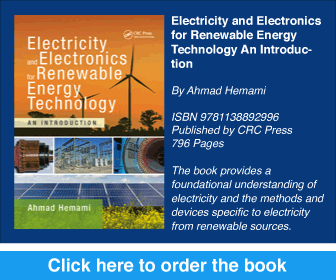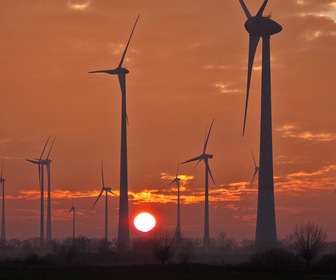The heightened focus on energy security and the rising cost of energy is reinforcing the difference in decarbonisation speed between Europe and the rest of the world – according to the sixth edition of DNV’s Energy Transition Outlook. Europe, which can be regarded as the leader of the energy transition, will double down on renewables and energy efficiency to increase its energy independence. European gas consumption will fall dramatically as a result of the war in Ukraine.
Compared to last year’s forecast, DNV sees the continent consuming almost half the amount of natural gas in 2050. Gas will meet just 10% of Europe’s energy demand in 2050 compared with 25% today. Lower-income countries, where cost is the main driver of energy policy, are seeing a different trend. High energy and food prices are reversing the coal-to-gas switch and putting a dampener on decarbonisation investments. For example, the share of gas in the Indian subcontinent’s energy mix will reduce from 11% to 7% in the next five years, while the share of coal will increase.
More broadly, inflationary pressures and supply chain disruption pose a short-term challenge to renewable growth. According to DNV’s Outlook, the global electric vehicle (EV) ‘milestone’ - when the EV share of new vehicle sales surpasses 50% - has been delayed by one year to 2033. However, the impact of the current crisis on the overall energy transition is outweighed by the plunging costs of renewables and increased carbon costs in the longer term.
For the first time, DNV’s forecast sees non-fossil energy nudge slightly above 50% of the global energy mix by 2050. This is mainly because of the growing and greening of electricity production. Electricity production will more than double and its share will grow from 19% to 36% of the global energy mix over the next 30 years. Solar PV and wind are already the cheapest form of electricity in most locations and by 2050 they will grow 20-fold and 10-fold respectively and will dominate electricity production with 38% and 31% shares, respectively. Renewables expenditure is expected to double over the next ten years to more than 1300 billion USD per year, and grid expenditure is likely to exceed 1000 billion USD per year in 2030. Energy security concerns are leading to renewed interest in nuclear, and the forecast this year reflects a modest uptick, growing by 13% from today’s levels to 2050. However, its share of the electricity mix will still reduce from 10% today to 5% by 2050.
The short-term increase of coal consumption will not prevent it from rapidly exiting the energy mix with its peak back in 2014. Oil has been approaching a plateau for some years and it will start to decline sharply from 2030 onwards. As a consequence of the war in Ukraine, global gas consumption will be lower than previously forecast. Before the war, DNV forecast natural gas would be the single largest energy source by the end of this decade, but this has been delayed to 2048.
Alongside the ‘best estimate’ forecast for the energy transition the Outlook this year also includes the Pathway to Net Zero, which is DNV’s most feasible route to achieving net zero emissions by 2050 and limiting global warming to 1.5°C. DNV forecasts that the planet is on course to warm by 2.2°C by 2100. Global CO2 emissions reduction of 8% every year is needed to reach net zero by 2050. In 2021, emissions were rising steeply, approaching pre-pandemic all-time highs, and 2022 may only show a 1% decline in global emissions. That makes for two ‘lost’ years in the battle against emissions.
Reaching net zero globally in 2050 will require certain regions and sectors to go to net zero much faster. OECD regions must be net zero by 2043 and net negative thereafter; with carbon capture and removal enabling negative emissions. China needs to reduce emissions to zero by 2050 rather than the current goal of 2060. Some sectors like electricity production will need to reach net zero before 2050, while other sectors like cement and aviation will still have remaining emissions. In our net zero pathway the maritime sector needs to reduce emissions by 95% by 2050.
According to DNV’s Pathway to Net Zero, no new oil and gas will be needed after 2024 in high income countries and after 2028 in middle- and low-income countries. Investments in renewables and grid need to scale much faster; renewables investment needs to triple and grid investment must grow by more than 50% over the next 10 years.
DNV’s Pathway to Net Zero requires much greater policy intervention than we see today. The full policy toolbox must be unpacked, including: higher carbon taxes and subsidies, stronger mandates, bans and financial incentives to encourage renewables to replace fossil fuels, and smarter regulation and standards.










